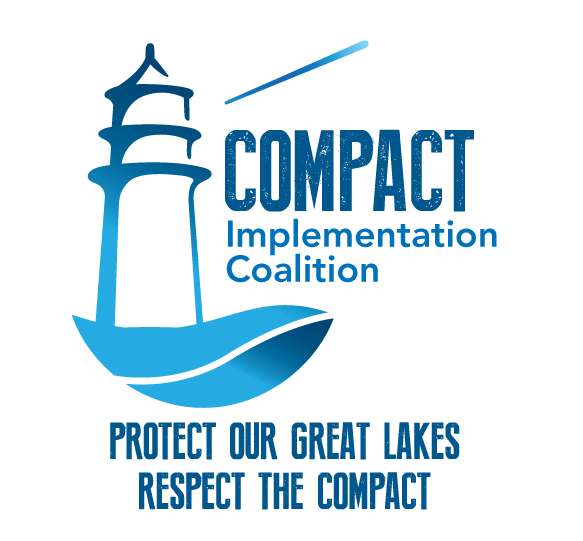Treating radium better alternative than diversion
Waukesha Freeman, August 23, 2015
George Meyer and Laurie Longtine
Dan Duchniak, Waukesha Water Utility’s general manager, was quoted extensively in the Freeman’s July 10 article, “City officials, environmental group clash over alternate water plan” and mischaracterized the nondiversion solution proposed by our Compact Implementation Coalition. We wish to correct these errors for the record and for the benefit of Waukesha residents and ratepayers who deserve to know the facts:
■ The Waukesha Water Utility asserts: The nondiversion solution was “analyzed and found to be inadequate, causing significant adverse environmental impacts to groundwater, wetlands and surface waters.”
CIC response: The Wisconsin Department of Natural Resources is not analyzing the non-diversion solution in the way it has analyzed Waukesha’s diversion application. The non-diversion solution would cause no additional environmental impact to groundwater, wetlands, or surface waters because it involves drilling ZERO new wells, deep or
shallow, nor does it involve digging any new pipelines or constructing pumping stations to Oak Creek and the Root River. GZA GeoEnvironmental engineers have determined that continued use of the deep aquifer is sustainable.
■ The Freeman reported, “The cost of the CIC alternative is said to be approximately $174 million — cheaper than the $206 million price tag for the Great Lakes Diversion — but Duchniak said the city’s plan is primarily based on environmental impacts.”
CIC response: This is like comparing apples to kiwi fruit. The cost of the diversion is $334 million over the next 50 years while the nondiversion solution is only $174 million over the next 50 years. That’s over $150 million, a significant amount of ratepayer money.
According to Waukesha Water Utility’s own financial projections (2015 budget), the average utility customers’ rates will increase over the next decade to almost $900 per year by 2024, almost three times the amount paid by the same average customers in 2014. Those costs would be dramatically less if Waukesha simply chose not to expand its
service area.
■ The Freeman reported: “Their CIC’s position is also inconsistent with Wisconsin water supply planning laws, according to Duchniak, who added that the group’s proposal would force area residents to be removed from sewer service areas that have been in place for decades.”
CIC response: Even today, most city of Waukesha and Town of Waukesha residents would have no idea if their homes were located in the Southeastern Wisconsin Regional Planning Commission sewer service area or not. In 1998, those sewer service areas were set with little to no input by the public and certainly with no foreknowledge that their
placement in the sewer service area would also mean being in a future water service area and part of an application to divert Great Lakes water across the subcontinental divide.
The city of Waukesha claims its water utility is merely following state planning law by including an expanded water supply service area that’s almost twice the size of its existing water service area. This claimed reliance on state planning laws directly conflicts with the reat Lakes Compact, the eight-state regional agreement signed into federal law in 2008, which sets forth clear, legal guidelines for exemptions to its ban on diversions.
Waukesha’s attempt to use the expanded service area to inflate its need for Lake Michigan water will not pass legal muster under the Compact, which trumps state law.
Simply put, the portions of neighboring communities included in the expansion do not meet two critical Compact requirements: They cannot demonstrate water conservation efforts to date and they fail to show an inadequate supply of drinking water.
■ The Freeman reported: “While the coalition noted that the deep sandstone aquifer had rebounded 80 to 100 feet over the past 15 years, Duchniak said it is still well below the threshold for use as a groundwater management area.”
CIC response: The overall trend for the last 20 years has been increasing water levels around all of Waukesha’s deep aquifer wells with the water level in most increasing dramatically above 1995 levels. This trend reflects a significant decline in total water usage and water use per capita since the 1970s.
■ The Waukesha Water Utility asserts: “Decisions should not be made on shortterm trends or impacts, but on resources that are sustainable and reliable for the long term.”
CIC response: We wholeheartedly agree, and urge the Water Utility to follow its own common-sense advice by estimating future industrial water use based on the trending decline of water usage instead of cherry-picking the highest use year, and to reduce its water demand to a more reasonable number that is justifiable.
The city of Waukesha can add treatment technology to three of its deep groundwater wells and continue to pump all existing shallow and deep wells to meet the current and future water needs of its existing water supply service area.
More than 40 other communities in Wisconsin use this safe method of treatment to meet radium standards. This can be done with no additional drawdown of the deep sandstone aquifer, no impact to local wetlands or surface waters and with over $150 million in savings for current Waukesha ratepayers. It is Waukesha’s best and most reasonable
option.
(George Meyer is an attorney, executive director of the Wisconsin Wildlife Federation and a six-year board member of Madison Water Utility Commission. Laurie Longtine is part of the Waukesha County Environmental Action League and Great Lakes advocate. They wrote this on behalf of the Compact Implementation Coalition.)
